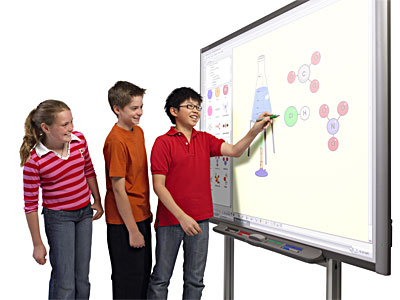
Interactive whiteboards
In chapter 10 there is a concern of special education students in need of learning and using technology, which is very true! Even students with special needs learn how to do school through Interactive whiteboards connecting sounds with pictures! Special needs students are sometimes known as non-verbal so, schools get funding for these buttons that the student presses when they are happy or sad, or when they want something which has proven to help a lot in schools! I know from personal experience because I helped out in a high school special education classroom with non-verbal students and it was amazing how smart they really were but they just couldn't express themselves or what they wanted to say in any other way.

Visual learning seems to be becoming more common due to technology which is good! Interactive electronic storybooks helps students learn literature on the computer. It combines words and pictures with sounds and effects. This to me almost sounds like a 3D book! Which to me sounds AWESOME. Now these interactive electronic storybooks are so popular in schools that there are applications for them to bring along on your phone.
Works Cited:
- Douglas Cruickshank.(2007). A Clean Slate: Interactive Whiteboard Makes Lessons Snazzy. Retrieved February 26th 2015.
- Maloy, R., O'Loughlin, R., Edwards, S., & Woolf, B. (2013). Transforming Learning with New Technologies. 2nd Edition. Boston, MA: Pearson Education Inc. Retrieved February 26th 2015.
- Interactive Whiteboards: Using them in the Music Classroom. A Fun Music Company Website Copyright © 2014. Retrieved February 26th 2015.
- Marceau, Breana (2015, February 26th) Promoting Success for all Students through Technology. Created with http://www.Canva.com


